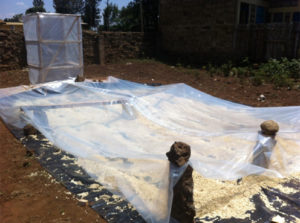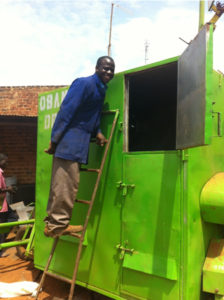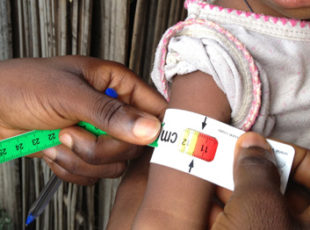In food-scarce conditions, is bad food still better than no food at all? FoodAfrica research programme partner, ILRI researcher Johanna Lindahl says that it might be true, although with aflatoxin-contaminated food the judgement could be difficult.
When some molds grow on crops, they produce toxic substances that are known carcinogens and harmful to human and animal health. For example in Kenya, where the FoodAfrica research programme has run for four years, crops commonly contain aflatoxins.
In the FoodAfrica study on maize samples from different parts of Kenya, about 75 % contained aflatoxins, and 26% of the samples were above locally accepted aflatoxin standards. International Livestock Research Institute (ILRI) researcher Johanna Lindahl says that the situation in Kenya is of course well known, but the amount of losses of income due to high aflatoxin levels remains unknown.

“Most countries have legislated limits to reduce aflatoxin exposure, but many are not enforcing the laws. This means less economic losses, but more unsafe food on the market. In the meantime, African exports are suffering, because the aflatoxin levels in the foodstuffs are above limits set by the EU”, she points out.
Consumers are aware and willing to pay
However, efforts to avoid aflatoxins are proving difficult to scale out. Drying maize properly after harvest reduces the occurrence of aflatoxins significantly, but these techniques are not widely used.
In a FoodAfrica study lead by Vivian Hoffmann and Kelly Jones, researchers at the International Food Policy Research Institute (IFPRI), it was found that farmers mainly take advantage of new technologies when these are provided for free, or, if they receive a premium price for aflatoxin-safe produce.
Willingness to pay was also studied: 600 urban consumers were asked if they would be willing to pay a premium for aflatoxin assured milk. The results are encouraging.

“All income areas were willing to pay extra for safe dairy products”, says Johanna Lindahl.
However, according to the study, there is a difference of knowledge level and risk thinking of aflatoxin contaminated food. In middle to high-income living areas, it seems that most people know of aflatoxin, but only a third of them think that it is a serious threat.
In low-income areas, however, awareness of aflatoxin is lower – only about half of the population know of aflatoxins – but also the risk is seen as more serious than in the high-income group. This may be explained by the fact that high-income consumers have more variety and therefore are less worried about toxins in the staples, that the poorer people are depending on.
Traditional processing might be best
So if bad food is still better than no food at all, how can we find ways to reduce aflatoxins in maize and dairy products? The answer might lie closer than one might think.
Natural Resources Institute Finland (Luke) has studied a microbiological method for controlling aflatoxin in Kenyan maize and dairy products. In fact, fermented maize and milk products are traditionally prepared in Kenyan rural households. These products contain natural lactic acid bacteria which have shown capacity to inhibit the growth of aflatoxin producing molds.
“This biocontrol technology provides a potential, economically and environmentally sustainable way to counteract aflatoxins. Testing of aflatoxin binding in maize and dairy based products by isolated lactic acid bacterial strains is now in progress”, says professor emeritus Hannu J. Korhonen, who was the driving force behind the whole FoodAfrica research Programme.
Text: Niina Pitkänen/Luke
Risk of stunting is a real question

FoodAfrica results indicate that there might be a real risk in aflatoxin contaminated milk especially to children.
“When we studied children’s growth in low-income areas in Nairobi, children that had been exposed to higher levels of aflatoxins in their milk were more stunted”, says Delia Grace of ILRI. “However, we don’t know if this was caused by aflatoxins or by some other common factor”, she continues.
In any case, high levels of aflatoxins in milk, both raw milk and pasteurized milk products, and the possible link to stunting in children means that more research should look into the causal relationship.
The question of children’s health and aflatoxin raise a question of policies regarding the regulation of the toxic substances in food and feed.
“The results address the need for changing policies regarding aflatoxins. The regulations must specify levels that are possible to achieve, and based on a proper risk assessment. In addition, policy makers must ensure that there are alternate uses for contaminated crops, and that these uses are safe and economically viable”, FoodAfrica research partners conclude.
